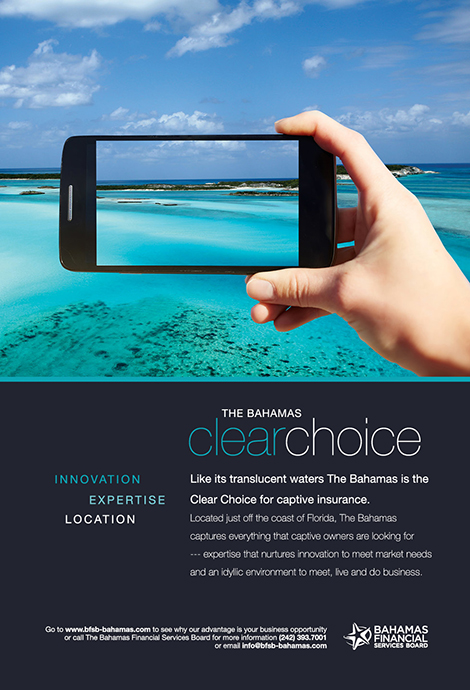Missouri and Utah
Regulators of Arizona, Missouri and Utah give an update on the health of the Western Region captive domiciles
Arizona, Missouri and Utah are perhaps not three states traditionally grouped together. In the captive industry, however, they find themselves linked by the Western Region Captive Insurance Conference, as their state captive insurance associations jointly host the event.
All three are well-known captive domiciles, and between them the three states boast almost 600 captives. The three states also share one other thing in common, the presence of a knowledgeable and captive regulator.
We spoke to the regulators; Vince Gosz, chief captive analyst, Arizona Department of Insurance captive programme; John Talley, captive programme manager, division of insurance company regulation, Missouri Department of Insurance, Financial Institutions and Professional Registration; and Travis Wegkamp, director of captive insurance, Utah Insurance Department, about the health of theirs domiciles, what sets them apart and the outlook moving forward.
What is the current state of the market in your domicile and how did it fare in 2018?
Travis Wegkamp: We see the past year as a positive one for the Utah captive market. We licensed 38 new captive entities, three of which were cell captives. Historically, Utah has been popular with smaller micro captives, who are still more than welcome here in the State; however, since the inception of the Protecting Americans from Tax Hikes Act we’ve seen a decrease in the licensing of new captives here in the state. On the plus side, the new formations we have been licensing are larger, more robust and comprehensive programmes, which we’re pleased to see. There were a total of 77 licences surrendered, 16 of which were cells.
Additionally, in our recently concluded 2019 legislative session we were able to pass legislation allowing for captives to request dormancy status for up to five consecutive years. The legislation becomes effective 14 May 2019 and we’re pleased to be able to offer this option to our captives.
John Talley: 2018 was a good year for the Missouri captive programme. We licensed 10 new captives and lost only four companies to closure or redomestication. With the license of one new pure captive in January 2019, we have licensed 72 captives. The gross written premiums in 2018 was $4.1 billion, which is places Missouri first or second for domiciles with under 100 licensed captives.
Vince Gosz: The Arizona captive domicile remains active and continues to experience solid and steady growth. 2018 saw eight new captive licenses including six pure/pure reinsurance captives, a new risk retention group (RRG), and a new protected cell captive insurer. The industries represented by these new licensees were primarily in finance/insurance and manufacturing.
At year-end 2018, Arizona had 124 active captives, most pure and pure reinsurers, but also including 11 RRGs and a small mix of other types. We have since added two new pure captive licenses in early 2019 and we lost three to dissolution. While numbers are still coming in, we expect Arizona captives to have written over $9 billion in gross premiums during the 2018 year, a figure that makes the programme very consequential to our captive owners and the industry as a whole.
What makes it unique?
Wegkamp: A key selling point for having your captive in Utah is no state taxes on your premiums; we simply charge an annual renewal fee of $5,000.
We have a great staff dedicated entirely to our captive companies. As such we’re easily available and able to respond to and turnaround requests in a quick and timely manner.
We’re working hard to be completely paperless and develop our website, insurance.utah.gov/captive, as a one-stop shop for our users.
Talley: The licensing fee and licensing renewal fee is fully deductible from premium taxes. Premium tax rates are less than 0.4 percent and can never exceed $200,000. With the credit for the licensing and renewal fee, pure captives must direct write above $2 million premium to pay any taxes. The examination costs are kept low because we utilise in-house examiners and a modified examination approach for pure captives. Presently, the cost averages $3,000 for pure captives.
Gosz: Arizona has licensed captive insurers since 2002 and has a mature regulatory infrastructure. It has long stood out from most domiciles, though not all, for having no insurance premium tax, instead requiring a reasonable flat annual renewal fee.
We have also taken the approach of relying more on the service provider community, as well as the technical expertise and reporting of actuaries and audit firms, and less on routine periodic regulatory examinations to monitor Arizona captives for liquidity, solvency, and compliance with captive insurance law. We examine RRGs routinely, of course, in part to comply with National Association of Insurance Commissioners (NAIC) accreditation requirements. While we have the authority to conduct examinations of other captive types, we tend to do so only for compelling reasons. This has likely saved Arizona captives no measly sum over the years.
What trends are you seeing in your domicile?
Wegkamp: We continue to see interest in ways for companies to place certain employee benefits in their captives. Also, continued interest in marijuana-related captives.
Talley: As with most domiciles, Missouri is seeing renewed interest in captives related to the marijuana industry. Since the decriminalisation of hemp, I have had several inquiries concerning forming a captive in the state.
Gosz: The captive industry is creative and resourceful. Arizona continues to see and hear lots of interesting ideas. Lately, the focus seems to be on exploring the use of stop loss, group benefits, cyber, and to some extent still, terrorism, but we continue to see many more traditional uses of captives, including reinsuring fronted programmes and deductible buydowns. We have also experienced a spike recently in interest to redomicile existing captives from offshore, or other onshore, domiciles.
Has there been any recent, or are there any upcoming, regulatory changes of note?
Wegkamp: As previously mentioned the big news is the recent addition of dormancy legislation. Another item to note is that we reverted back to requiring two individual officer signatures on the captive’s annual statement.
Otherwise, there was some rearrangement of sections of our captive code to be in a more logical sequence and the use of generalized terms to reduce duplicative language for stock companies and LLC’s.
Talley: There have not been any recent changes in the Missouri captive laws.
Gosz: Arizona is always on the lookout to make revisions to further enhance our position in the captive space. We added a small change to the agency captive law last year. I can envision us making some more enhancements in the coming year or two as we identify opportunities.
Lately, however, most activity has centered on ensuring we remain in line with NAIC accreditation standards. We recently were reaccredited by the NAIC for another full five-year term, which is great news for a domicile active in regulating RRGs. In the last year or two, we also rolled out an online captive annual reporting portal, which was a popular enhancement, along with an electronic renewal fee payment option and hope to extend these capabilities to other aspects of our interaction with captive managers and others.
What is the outlook for 2019?
Wegkamp: I would say more of the same; we’ll continue to see a positive trend of formations with strong risk programmes, despite what I think will be continued IRS scrutiny given their recent tax court victories.
Talley: I believe that formations of captives will continue to be strong in 2019. Different industries, some new to the idea of alternative risk financing, will fuel this continued growth.
Gosz: The first few weeks of 2019 were much busier than usual for us. While actual numbers have not climbed markedly quite yet, there has been a large number of conceptual and pre-application conversations regarding new formations and redomestications.
At the very least, I would expect 2019 to come in as strong as 2018. I look forward to working with captive owners and others to help with their challenges.





